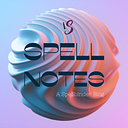Summer Prompts — Water
This blog post will help you respond to the following Spellbinder Instagram post:
“Experiment with artworks or photographs depicting water. How can you capture water’s colourlessness, movement and fluidity in a still image? Can materials such as fabric and glass help you create that illusion?”
Water, along with clouds and the sky, are some of the hardest things to capture in art. At least it certainly felt that way when I was in art classes at school and was probably part of the reason my art career never really got going…
This summer prompt, then, is perfect for anyone who like me struggled with depicting water in art or photographs. It identifies three of water’s key features.
The first of these is its colourlessness — water takes on the colour of the things around it rather than having its own distinct colour. Consider what in the environment surrounding it could make water take on a certain colour, or what might make it clear and colourless. Is it water in the sea, or a mountain stream? Is it muddy, dusty water? Is it water that has been filtered and purified and made clear? By considering these different aspects of the environment surrounding the water, you can take steps towards deciding how to depict it.
Two other key aspects of water are movement and fluidity. These are potentially more difficult to portray in art or photography than water’s colour/colourlessness. This is where the materials that you use could come in handy. How could you use different materials, such as glass and fabric, to portray the constant motion of water? How could you use them to portray the different ways in which water moves? Are there other materials that you could use as well as glass and fabric? It might be easier to incorporate these into a piece of artwork, but consider too how you could use them in photography.
This prompt tackles a potentially tricky area. Are there other ideas you have as well as the ones we have considered? Good luck and let us know how you get on!
Ned Vessey, Blog Co-Ordinator
Photo by Pixabay on Pexels.
Read this blog post on the Spellbinder website here.
